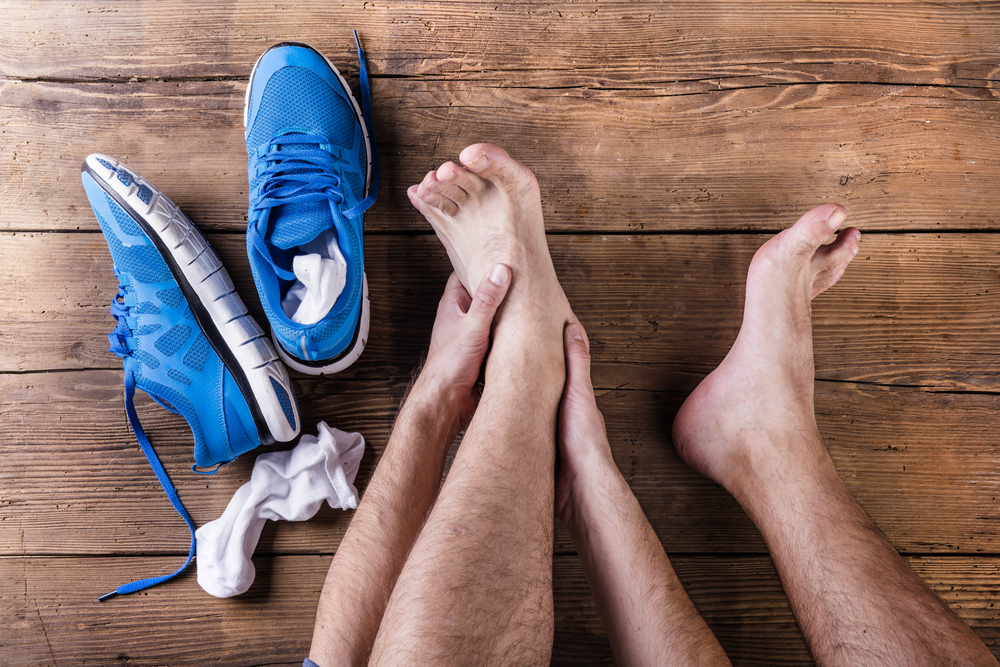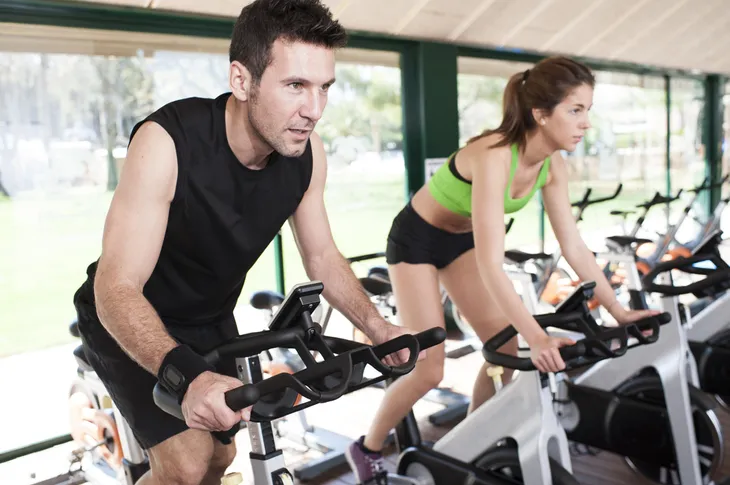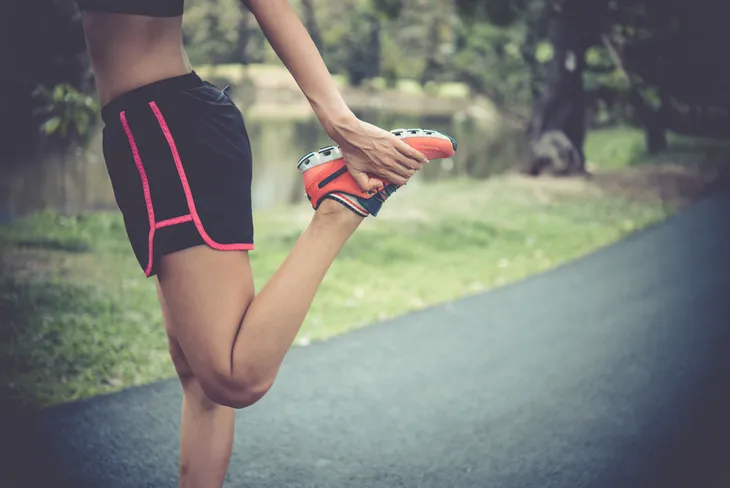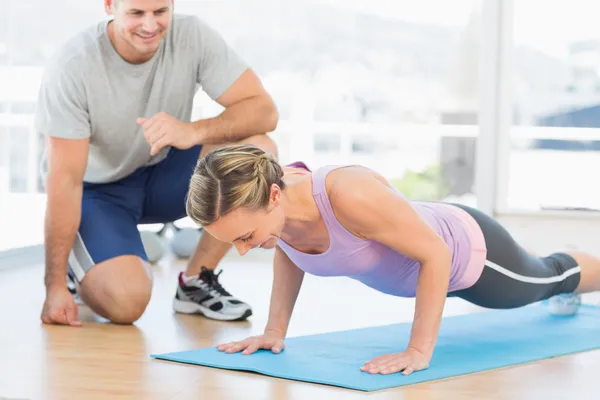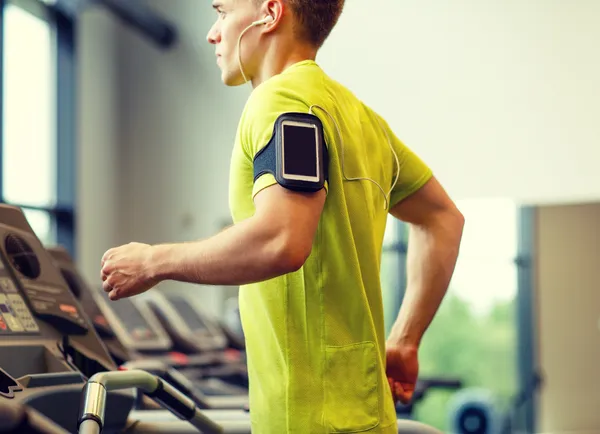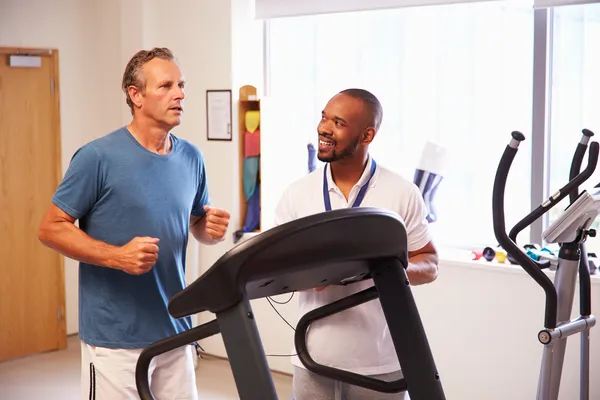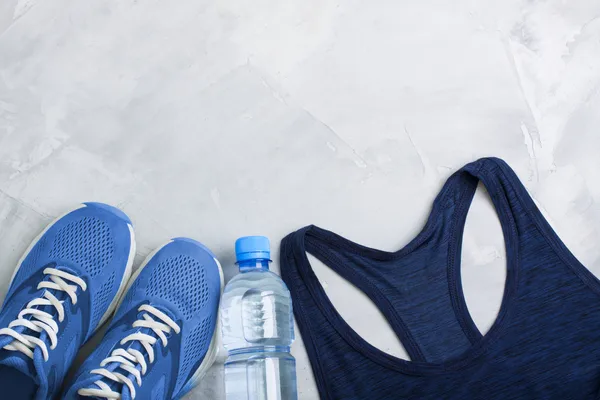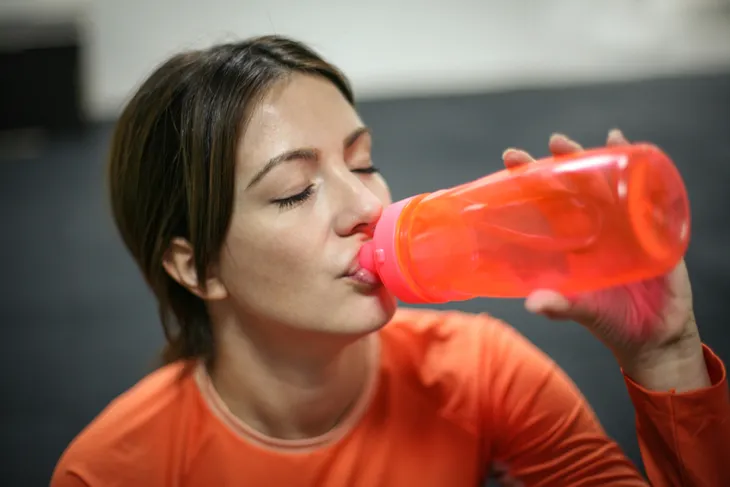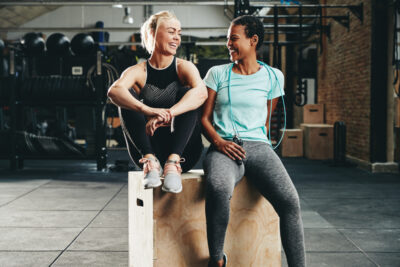No matter how hard you train, not doing it properly is likely going to give you more problems than benefits. Avoiding injury while working out means focusing and knowing what you’re doing, which takes time.
Even the most seasoned athletes can get hurt if they don’t follow some relatively simple guidelines and don’t try to push too hard too quickly. It may be frustrating when you’re just starting out to take it slow, but doing so can help you avoid losing weeks of training time from a pulled muscle (or worse). Here are 12 ways to avoid getting hurt while training…
Know Your Limits
Getting stronger takes work, and a little bit of strategy to avoid getting hurt in the process. WebMD notes you should “know your body’s limitations,” namely where your weakest points are so you don’t push them too hard.
The source explains if you know your knees are already compromised, for example, don’t use a stepper or a treadmill (or do leg presses) as this can aggravate the injury. Use something like a stationary bike that doesn’t cause “pounding” on the knee joints, it adds. “The point is that you have to acknowledge the weakest areas of your body,” and slowly build them up without overdoing it, explains WebMD.
Work It at Work
Going from a sedentary lifestyle to suddenly hitting the pavement hard is probably not going to help you avoid injury. Florida Hospital has five tips to get active in order to reduce your chance of getting hurt in the process.
You can actually start preparing your body for exercise at the office by avoiding sitting around all day, says the source. “We’re not made to sit for long periods of time,” it explains. Try a standing desk, go for a walk on your lunch break, or at least do some shoulder rolls and neck stretches occasionally at your workstation to avoid stiffening up.
Go Lean Before Mean
When people work out, they’re often dreaming about having those huge, bulging muscles that look good in competitions. However, you should focus on building lean muscle slowly, which will help protect you from injury by strengthening bones and weaker muscles, while giving you a sculpted look.
Building lean muscle is more about removing the layer of fat obscuring your muscles to make them more visible, explains LiveStrong. However, achieving this has a lot to do with diet – the source says you should decrease the overall number of calories per day, but maintain at least 1-gram of protein a day per pound of bodyweight. Also, about 15-percent of the calories should come from healthy fats, it adds. Resistance training is important, but cardiovascular training is an important component of this mix, it adds.
Be Slow Out of The Blocks
Many people daydream about bursting out the blocks and leaving their competition in the dust during a race. However, if you haven’t trained properly for that, you’re probably going to blow a tire.
Harvard Medical School says you should warm up and start gradually – meaning don’t just jump into a new exercise routine full-tilt. If you’re new on the stationary bike, for example, set the tension to the lowest levels to start. Also start with some walking around or by doing leg lifts to send blood to your muscles, as “cold” muscles can be more injury-prone, it adds.
Give Yourself an Easy Day
Runner’s World says even the pros give themselves a lighter training day – more often than you might think. It says while you can increase your monthly running totals gradually, you should always schedule in some down time.
It says you can take a hard-day/easy-day alternating approach, but more realistic might be a hard/easy/easy pattern. “Many top runners use a system where they scale back their weekly mileage by 20 to 40-percent on a regular basis, maybe once a month,” it adds.
Be Mindful of Your Gender
According to Harvard Medical School, females are actually more prone to sports injuries than male counterparts, although we seem to witness more men being hurt. That’s likely because we see more male athletes in general on television than females, it adds.
However, there is a “gender gap” when it comes to injuries – for example, women have anterior cruciate ligament (ACL) injuries up to six times more than men, says the source. Harvard says it’s not known exactly why women are more injury prone than men, but there are theories. A good plan of attack is knowing which areas you’re most susceptible to injury based on your gender and work on strengthening them up slowly, while participating in the activities you enjoy most.
Technique First
No matter how hard you want to train, not doing it properly can lead to getting hurt. Sure, you can watch online videos of how to exercise, but they’re not customized to your body’s limitations and your fitness goals.
The American Council on Exercise says you should seriously consider hiring a personal trainer – and backs it up with 10 reasons why. One of the reasons is – not surprisingly – to avoid injury. “If you are new to exercise or find that some movements are painful, it is worth hiring a trainer to be certain that you are moving in a safe and effective way,” it explains.
Switch it Up
Working the same muscles over and over can land you laid up in bed. Florida Hospital says cross-training can go a long way in helping you avoid getting hurt.
This means if you’re a runner, you should also periodically jump on a bike or into a pool for a few laps, it adds. These two exercises in particular help rest tired joints while working new muscle groups. “It’s probably the single most important thing you can do to prevent injuries,” says the source.
Train Age Appropriately
The simple fact of the matter is that if you’re 60, you’re not going to be able to train as intensely as someone who is 20 (unless you’re on of the rare few, and in that case, we salute you).
WebMD calls this “fitness amnesia,” or when you forget that you’ve aged since the last time you’ve trained, and try to continue right where you left off. This often ends up with an injury, adds the source. The shoulders in particular “are among the body parts at greatest risk when old athletic dreams die hard,” it adds. Start slowly and gradually build up to the intensity you desire.
Check With a Doctor
We’ve already told you that you should have a qualified trainer on your team, but what about a doctor too? This can be an important way to “spring clean your fitness routine,” explains Shape.com.
The source explains that only about 20-percent of Americans get an annual check-up from a doctor to make sure all systems are a go. You may feel fine, but you’ll want a doctor to measure levels such as blood pressure, cholesterol, and vitamin deficiencies before you tackle a workout program, it explains.
Invest in Proper Gear
Not all protective gear is appropriate for all physical activities. For example, helmets are an important part of avoiding injury, but there are different types available whether you’re rollerblading or playing baseball, says UnityPoint.org.
Don’t forget the mouth guard if you’re engaging in sports where physical contact is a reality (even if it’s not a “contact sport”). Elbow and wrist guards are also important. If you’re a runner, get a shoe that provides the best support for your foot type – you may need to consult an expert for this.
Don’t Forget the Water
You’ve trained hard and have the right gear – but something is still holding you back from performing your best. It could be something as simple as not drinking enough fluids.
RunnersHealth.com explains, “Hydration is essential to preventing illness or injury during your training and during the event,” and starts well in advance of a competition. It suggests drinking 16-20 fluid ounces of water or sports drink at least 4-hours before exercising, then topping up with 8-12 fluid ounces of water 10 to 15-minutes before the routine. Don’t forget to stop for liquid fuel regularly during exercise or competition – the source suggests 3 to 8-fluid ounces of sports beverage every 15 to 20-minutes when you’re exercising for longer than an hour.
